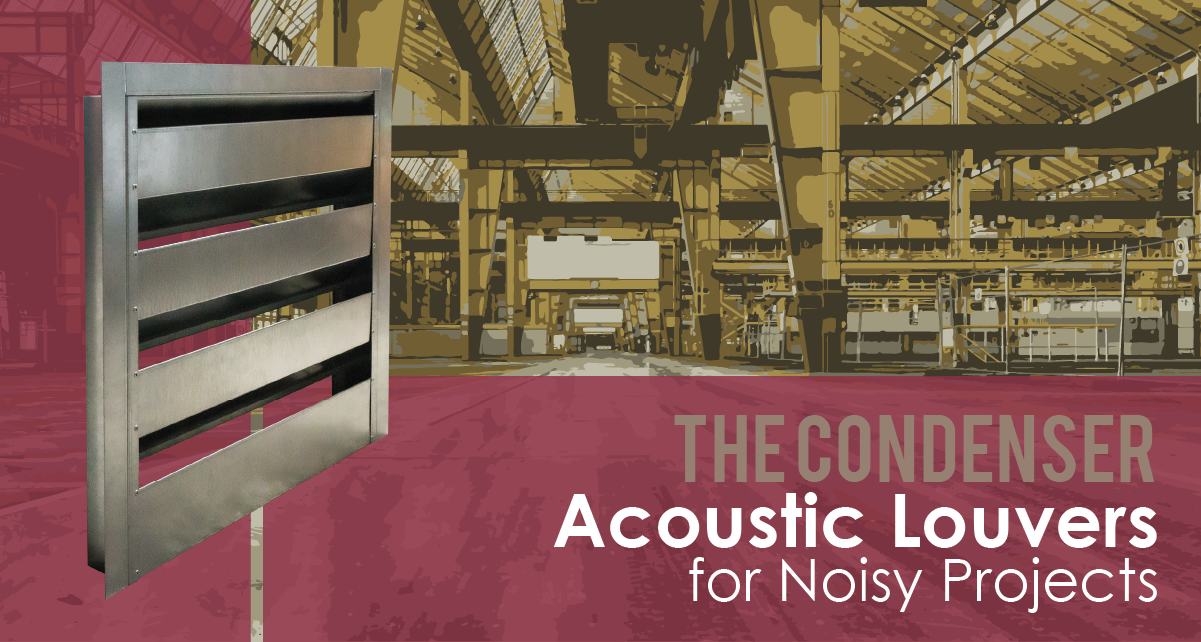Acoustic louvers help lower the volume on loud equipment. Learn how these louvers work with this quick Condenser article.
Noises in the Building
Heavy equipment like generators and boilers keep occupants safe and comfortable throughout the day, but they can also generate a lot of noise. This noise travels in the air from room to room, through walls and doorways.

Sound waves will also travel through ductwork. A generator in the basement can disrupt occupants on the second floor, carried on the air through ventilation ducts. The equipment doesn't have to be in a neighboring room to create a nuisance.
Acoustic louvers dampen the noise created by this equipment, so that it doesn’t become a nuisance for those working and living in the building.
Acoustic Louvers
Acoustic louvers are louvers with insulated stationary blades. These blades resemble straight blades or airfoil blades, but they have a unique design that sets them apart. The underside of each blade is perforated with small holes that capture air as it passes under the blade. These small holes lead to the blade’s internal insulation, which consists of sound absorbing material.
The insulated core attenuates the sound waves and dampens the noise as it passes into the insulated core of the blade. The sound waves will lose energy as they move around the insulation. This lowers the overall volume of the noise by several decibels, which is known as the transmission loss, or the sound's loss of transmission power.

Acoustical louvers are tested at multiple octave bands to determine the transmission loss of the sound within each band, measured in decibels. This data set will be the louver’s true indicator of performance. Always make sure to check the louver’s submittal to make sure the louver works for your project.
Their frame depth starts at six inches deep and can extend to as much as twelve inches deep, depending on the model. Deeper frames provide more sound attenuation and dampening, but they also require more support when installed. You will also need to make sure the substrate can support the louver.

Where to Install Them
Acoustic louvers are typically installed in areas that house heavy equipment, like generators. Designers may choose to add a partition wall in these areas, and install the acoustic louver there, to isolate the equipment from the rest of the building.
Acoustic louvers provide airflow like any other louver, but their main purpose is dampening noise. They can be installed on the exterior of the building, to dampen noises coming from outside. They are commonly tested for water penetration to aid with blocking light rainfall.
Check the louver’s submittal for the AMCA Certified Ratings seal and the accompanying water penetration test data. Remember, their primary purpose is sound attenuation.

Heavy equipment plays a crucial role in your building, but the noise they make can bother people trying to work. Keep the peace in your building with acoustical louvers.
What do you do about loud equipment in a building? Share your thoughts in the Comments section below. We want to hear from you!
Starting a new project? Arrow United can help. We build every louver to meet HVAC requirements. Contact us about stationary louvers today, or about anything else you need for your project. We are ready to help.
For more on louvers, check out these Newsstand articles:
.webp?width=91&height=70&name=MCDLG%20Logo%20(Resize).webp)





